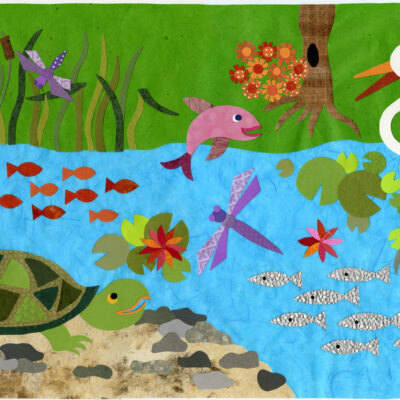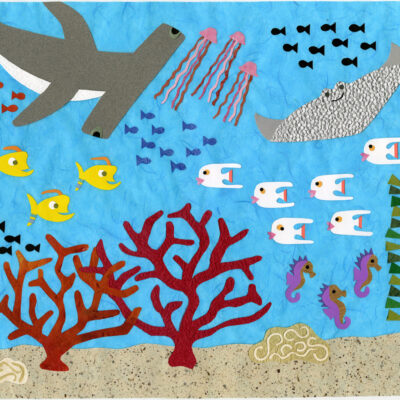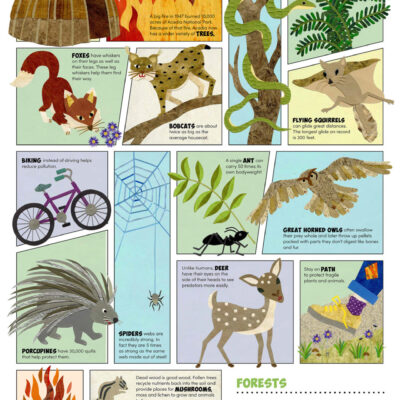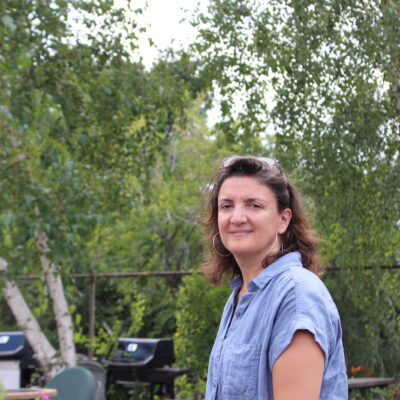On Living in an Art Museum
Loft 119
As we set up for our conversation, Ingrid and I chatted about how cool it is to be constantly surrounded by art. She remarked, “I think about it every time someone comes to the Lofts that has never been here. Like last week, my eight-year-old and eleven-year-old niece came here, and they said, ‘Wow auntie! You live in a museum!’ And I forget that I kind of do!” That’s undoubtedly a perk, but it’s not the only thing that Hess appreciates about Western Avenue.
Do you feel like seeing the other art around you has influenced your work?
I think what influences my work is being around other artists who are motivated. I think that being a successful artist means getting up in the morning every day and just doing it. The most inspiring thing about living in the Lofts for me is that I see other people engaged in that discipline. It’s witnessing the discipline that inspires me.
What drew you to the Lofts?
I was really lonely. I had lived in a bunch of apartments over the years, and I never really felt like there was a community attached to the apartment living. And I had heard about Western Avenue—what kept coming up in conversation, again and again, was that there’s community here. There’s a community here. So, I actually came for the community more than for the art, initially. Although, now that I’m here, they are equal parts important.
You also teach at UMass Lowell. What does being an educator mean for your art practice?
Well, I think I won the lottery when it comes to my job. My job is really two jobs: half is teaching, and half is scholarship or research, which is essentially my own art practice. So, on a daily basis, I’m very much hopping between the two. That’s very important to me.
I see some people here that are only full-time artists. I admire them, I think that’s great, but I don’t know if I could do that. There are also people here that are full time teachers, and I admire them as well, but I think I couldn’t do that either. So somehow, the half-and-half is perfect. Because I love both, and I get energy from both.
When you’re in the classroom, what do you do when encountered by students that say, “I’m not creative,” or “I don’t have any natural talent”? How do you help them?
So, I don’t let students say to one another, “Wow, you’re so good.” They are allowed to say, “I’m so impressed by how hard you worked.” I try to switch the language.
And I talk a lot about how in the United States, with the exception of babies—when a baby takes its first step and falls, everyone cheers—with the exception with babies, in our language, we say we’re bad at something; we don’t say we’re a beginner. No one wants to be bad—I don’t want to be bad at things! But as a result, that prevents people from learning new skills, because you have to be a beginner.
So, when my students are discouraged, I try to tell them, “You are a beginner, and you’re going to become advanced, if you want to. But right now, you’re at the beginning stage, and you’re actually doing a great job for a beginner.”
I’d like to talk a little bit about a specific work, and your general process. What’s coming to mind is what you’ve done for Acadia National Park. Could you walk us through how something like that starts?
It starts by listening to elementary school teachers. Because they are the people who will ultimately use the product. So, I’ve talked to a lot of teachers, and there’s some common threads that I hear from them that are always in my head when I’m creating. One of the threads is that there’s not enough equality and emphasis on girls and kids of color. That’s one theme. There’re not enough tools that give a teacher options in how to use it.
If you think about a ball, the beauty of a ball is that you can throw the ball, you can kick it, you can pass it, you can roll it. It’s a tool that can be fun, but there’s all kinds of ways that you can have fun with it. Ideally, a teaching tool would be that way to.
Specifically, I read a lot about Acadia, and two things that kept coming up were issues around the native peoples—the Wabanaki—and also issues around environmental sustainability. Those were the things in my brain as I was trying to decide what can I create. Those were the tenets that I was trying to honor. Then I start sketching. Once I know what my tenets are, then I read and sketch, and read and sketch, and read and sketch.
Guest blogger
Guest writer Mica Lin-Alves interviewed Ingrid near the community garden plots at Western Avenue. Mica (@micalinalves) writes about life, music, and art. He enjoys tasty food and the company of passionate people.
This conversation has been edited and condensed for clarity.




